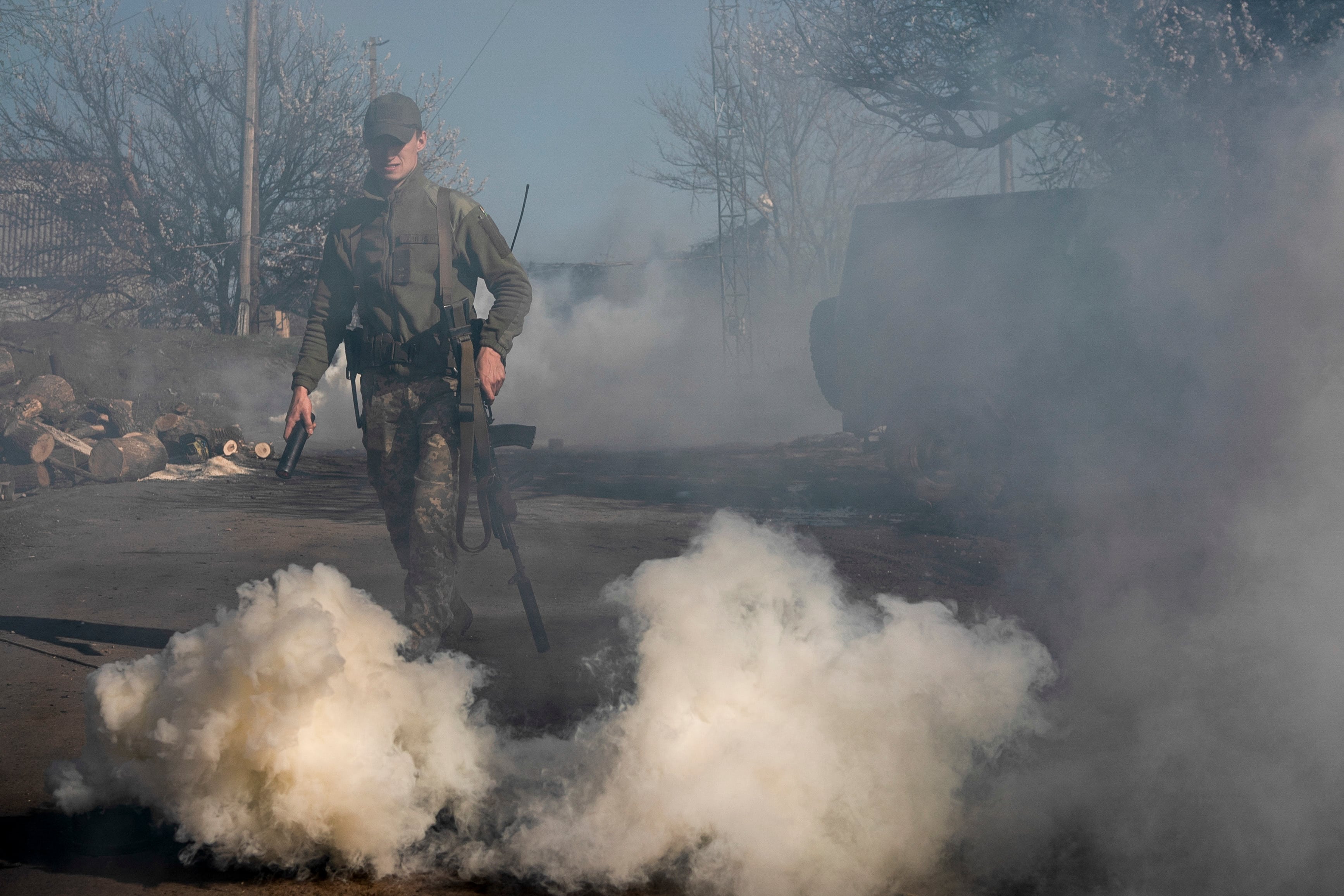Far from the noise of the political storm over President Donald Trump’s phone calls with Ukraine is the loud barrage of Russian artillery fire blasting away in the Donbass.
The Russian attacks are increasing in frequency and destruction. Ukrainian casualties are mounting.
Ukraine has asked the U.S. to provide military supplies to support their fight against the Russians, but the White House has delayed it.
For the Ukrainian military, and ultimately for the U.S. and other allies who are dealing with Russian aggression, the bottom line is this: Any delay in arms sales has a deleterious effect on Ukraine’s fight.
That’s bad news for U.S. forces who may one day encounter the Russian military and will rely in part on lessons learned from Ukraine’s fight.
Since the 2014 Russian seizure of Crimea and invasion of Ukraine’s east, the “full spectrum” of Russian military doctrine has been on display. That doctrine — often referred to as “hybrid warfare” — includes the use of conventional forces like mechanized infantry backed by armor and artillery, as well as special operations forces, assassinations and bombings, electronic warfare, cyber attacks and the weaponization of information.
Ukraine needs U.S. arms to counter these threats.
In 2015, for instance, Ukraine received 20 AN/TPQ-53 radar systems that track incoming mortar and short-range artillery fire.
The casualty rate for units equipped with those systems dropped from 47 percent to about 18 percent, Col. Andrii Ordynovych, Ukraine’s military attache in Washington tells Military Times.
Similarly, after Ukraine’s military began using U.S.-provided Javelin anti-tank weapons, Russian tanks and armored personnel carriers that once operated with devastating impunity have backed off, Ordynovych said. “That was a strategic deterrence,” he said.
That’s the goal of the $250 million U.S. aid package held up by Trump, which includes sniper rifles, rocket-propelled grenade launchers, counter-artillery radars, electronic warfare detection and secure communications, night vision and military medical treatment.
In July, George P. Kent, deputy assistant secretary in the European and Eurasian Bureau at the U.S. Department of State, told Military Times that the U.S. military is paying close attention to how Ukraine fights the Russians, and the equipment and tactics and techniques the Russians are employing.
“I think there is a great opportunity, even as we are helping the Ukrainian military build its own resilience against Russian aggression, for us to learn from the modern way of Russia doing war in Ukraine,” he said in an interview.
Things have changed since Russia invaded Georgia in 2008, said Kent, and what the Russians are learning in Ukraine has been applied to places like Syria.
The delay in the arms shipment “is being assessed by Russian intelligence,” said Ukraine’s military attache.
Given what’s at stake for U.S. national security interests, every day the Trump administration delays is a good day for Russia.
And by extension, a bad day for us.
